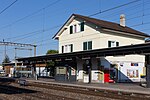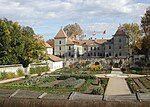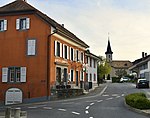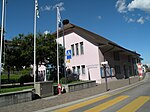Toblerone line
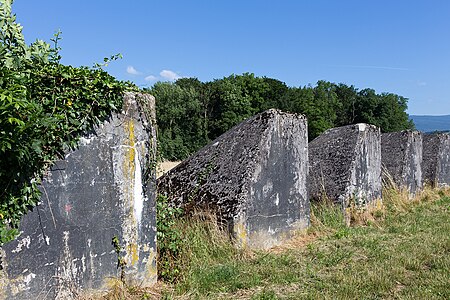
The Toblerone line is a 10 km long defensive line made of "dragon's teeth" fortifications built during the Second World War between Bassins and Prangins, in the Canton of Vaud, Switzerland. These lines of defensive blocks can be found all over Switzerland, though more commonly in border areas. Their purpose was to stop tank invasions. The 2,700 9-ton concrete blocks that make up the defences are similar to the shape of the Toblerone chocolate bar, which gave its name to the line. Since the line has been left to nature since its construction, it was decided to keep these concrete blocks and to make a hiking trail along their route.The line was built along twelve fortresses, the most well-known being the "Villa Rose" in Gland, which was transformed into a museum and opened to the public in 2006.
Excerpt from the Wikipedia article Toblerone line (License: CC BY-SA 3.0, Authors, Images).Toblerone line
Route du Domaine Impérial,
Geographical coordinates (GPS) Address Website Nearby Places Show on map
Geographical coordinates (GPS)
| Latitude | Longitude |
|---|---|
| N 46.402166666667 ° | E 6.2801666666667 ° |
Address
Bergerie lac
Route du Domaine Impérial
1196
Vaud, Switzerland
Open on Google Maps


